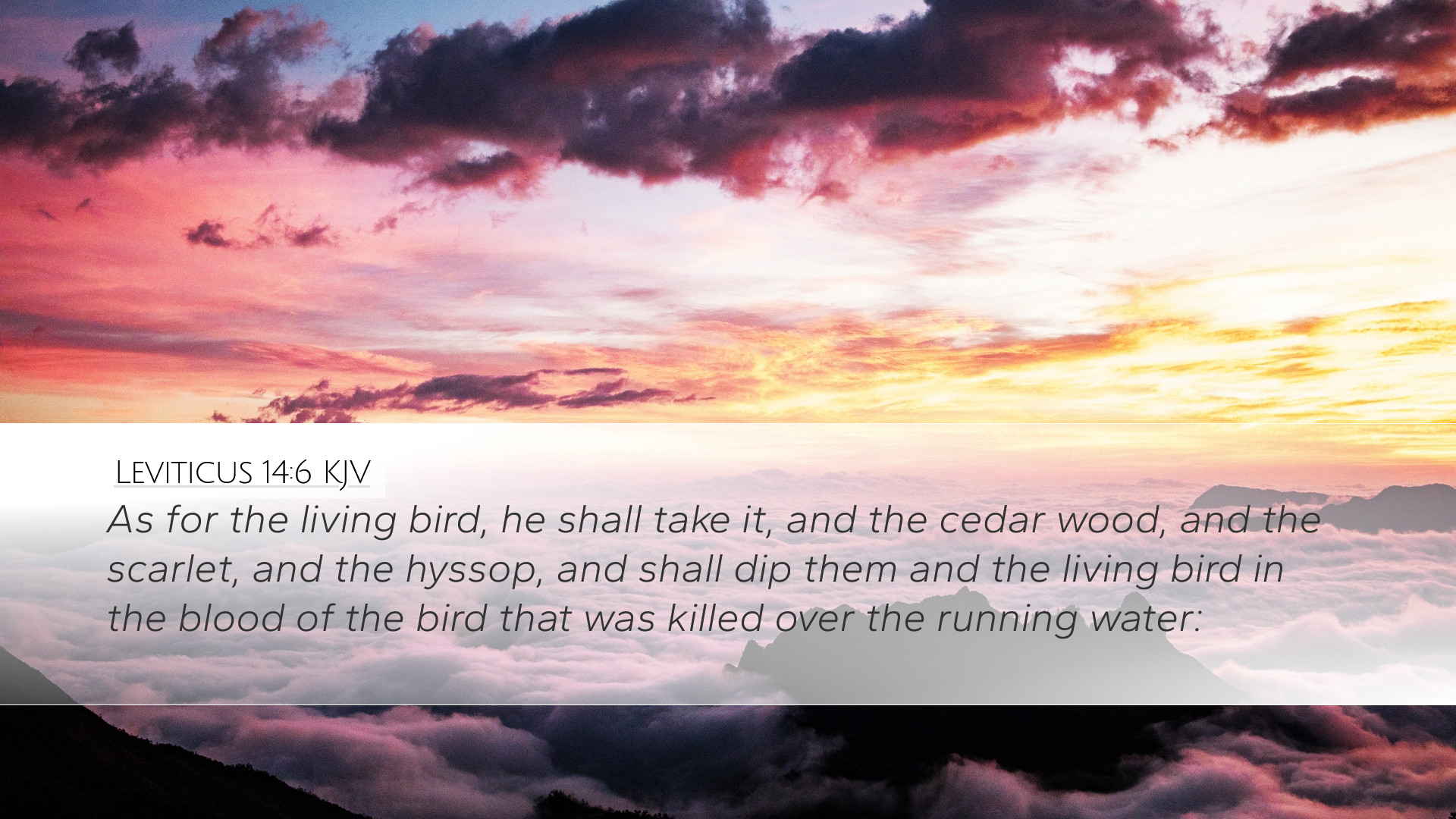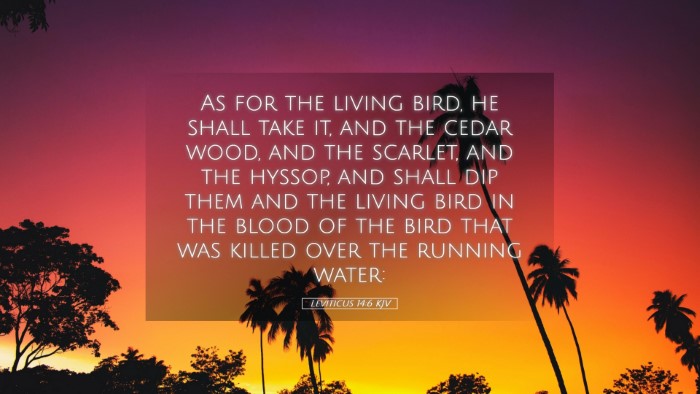Commentary on Leviticus 14:6
Leviticus 14:6 states: "As for the living bird, you shall take it together with the cedar wood, and hyssop, and scarlet material, and shall dip them and the living bird in the blood of the bird that was slain over the running water." This verse is part of the ceremonial laws regarding the cleansing of a leper, which reflects the broader themes of sin, purification, and atonement in the Scriptures.
Contextual Overview
This chapter is remarkable as it provides detailed instructions for the priestly procedures to be followed when a person afflicted with leprosy is healed. The healing of leprosy is a significant event, as it symbolizes deeper spiritual truths about sin and the restoration of relationship with God.
Symbolism of the Elements
- Living Bird: The use of a living bird signifies life and the concept of release. In the context of sin and healing, it represents the idea that the individual is set free from the disease.
- Cedar Wood: Cedar is often linked in Scripture to durability and strength. It symbolizes the enduring nature of God's work in the life of the believer.
- Hyssop: Hyssop is representative of purification, referenced in passages such as Psalm 51:7 where it is used in the context of cleansing from sin.
- Scarlet Material: This references the blood which signifies atonement and the cost of sin, reminding us of Christ’s sacrifice.
- Blood of the Slain Bird: The blood represents the payment for sin. The juxtaposition of life (the living bird) and death (the slain bird) vividly depicts the great exchange of the Gospel.
Theological Implications
Matthew Henry emphasizes that the ceremonies described in Leviticus are not merely ritualistic but point to profound spiritual truths. They demonstrate God’s grace and mercy in providing a means of restoration. The blood serves as a reminder of the seriousness of sin and the need for atonement.
Albert Barnes notes that the act of dipping the living bird in the blood signifies the transfer of guilt and sin from the individual to the substitute. This act prefigures the New Testament revelation of Christ, who takes upon Himself our sins.
Adam Clarke elaborates on the use of water in this ceremonial cleansing, emphasizing its role in the symbolism of purification. Water represents the Holy Spirit, who purifies the believer's heart and mind, leading to transformation and renewal.
Application for Today
For pastors and theologians, this passage exposes the complexity of sin and the myriad ways in which God provides for its remedy. It calls the believer to reflect on Christ’s atoning work and the sanctification process initiated by the Holy Spirit.
Students of the Word can glean from Leviticus 14:6 a multidimensional understanding of the Gospel. The living bird and the cedar wood encourage us to see that we are called to live in the newness of life, while the blood emphasizes the need for continual reliance on Christ’s atonement.
Moreover, the rich symbolism is a reminder of the interconnectedness of the Old and New Testaments—each element serves as a thread in the tapestry of God's redemptive plan. Understanding these connections deepens faith and enhances our appreciation for Scripture's cohesive narrative.
Conclusion
Leviticus 14:6 serves as an instructive verse on the themes of atonement, purification, and the grace of God through rituals that foreshadow the ultimate sacrifice of Jesus Christ. By examining the symbolism embedded in each component of this verse, we can recognize a divine strategy for redemption and restoration, transforming our understanding of sin and salvation.


